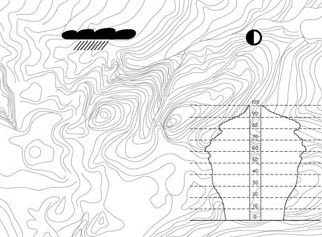*
Landscape Architecture and Landscape Planning deals with landscapes as complex systems of ecological, cultural and socio-economic processes. Landscape is viewed, de-layered and re-configured as a structure of relationships between human management, cultural perception and design as well as natural processes.
Reading urban landscapes, visualising the contexts and processes that shape urban landscapes, examining existing structures and their formation are seen as a prerequisite for being able to develop and design urban landscapes sustainably and aesthetically. Students should be enabled to handle future issues, design topics and perspectives for action for the sustainable design of urban landscapes within the complex contexts of urban landscapes.
The chair teaches and researches landscape architectural design as a context-, process- and exchange-oriented practice of spatial design.
Identifying and developing the characteristics of urban landscapes Every landscape is unique. If the specific characteristics of an urban landscape are to be identified and developed, the first step is to uncover the connections between global urbanisation processes and local conditions (natural conditions, spatial structures, cultural layers) in order to look for ways to preserve and develop sustainable, resilient and unique landscapes. How can spatial structures that follow a global development logic be more strongly connected to and anchored in the local? How can the unique character of an urban landscape be recognised, interpreted and developed?
Sensory perception and the spatial everyday life of urban landscapes Aesthetic perception is a prerequisite for developing emotional affection and responsibility for one's own living space. How are urban landscapes perceived sensually as an everyday living context? How can meaningful situations arise in them?
Developing and integrating closed systems If infrastructures are better understood as landscapes to be designed, this can increase the quality of life in urban landscapes. This requires the development of infrastructures not only according to technical parameters, but also the integration of social, ecological and aesthetic aspects in their planning. A landscape view of separate functional systems makes it possible to recognise connections and interrelationships. For example, how can monofunctional transport infrastructures or supply and disposal infrastructures simultaneously take on social and ecological functions, and how can this increase the quality of the design and utilisation of urban landscapes? How can multidimensional and permeable landscapes be created? What binding role do (urban) blue-green infrastructures play in this?
Designing with ecological processes The future development of cities cannot be conceived without ecological issues such as climate change and the finite nature of natural resources. If urban landscapes are to be sustainably qualified, ecological processes and their design potential must be included in the draft. An integrated view must be taken between natural conditions and the urban development of a landscape. What does landscape-based urban development look like and how can urban landscapes be designed in a climate-friendly way? How are climate, soil, water and vegetation dynamics included as formative processes in the sustainable design of urban landscapes?



